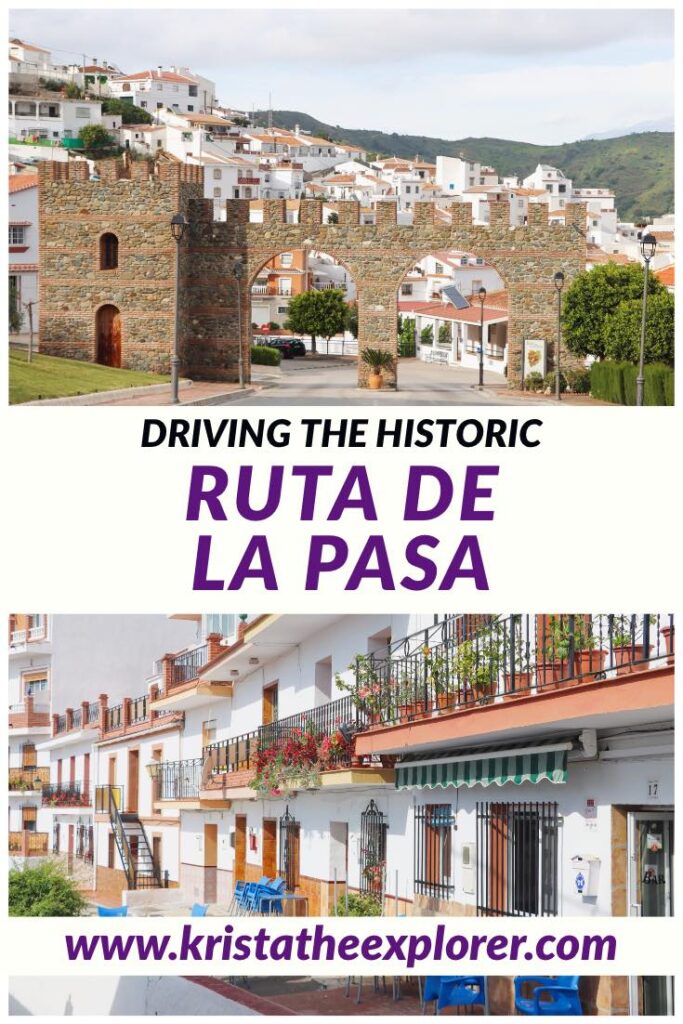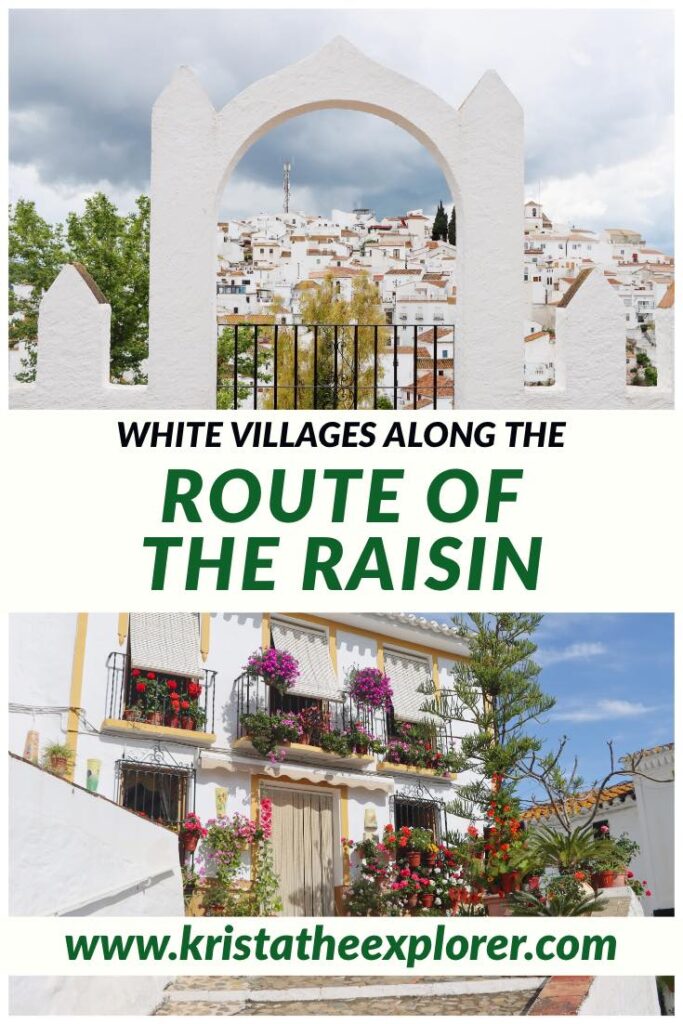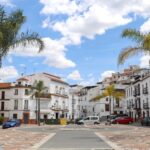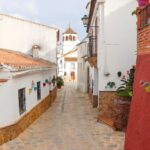If you’re thinking about driving around southern Spain, you won’t be disappointed with the amount of driving routes there are. One of the most famous routes in Spain is the route of the white villages, which will see you pass through a number of pueblos blancos on your way from Malaga to Cadiz. But if you want to stay closer to Malaga, the Axarquia region and the Ruta de la Pasa is where you should head for.
There are a number of interesting driving routes in this region. Each one passes through quite a few white villages that are famous for producing specific types of products. Out of all of the routes you can choose from, driving the Ruta de la Pasa (Route of the Raisin) in the Axarquia is an absolute must. Even if you’re like me and don’t like raisins.
What is the Ruta de la Pasa?
The Ruta de la Pasa (Route of the Raisin), is a driving route within the Axarquia region of the Province of Malaga. It stretches for 62.5km and passes through 7 white villages (not including La Cala and Rincon de la Victoria). Between each village are gorgeous hilly landscapes and fantastic viewpoints too. It’s considered to be one of the best driving routes in Malaga. Along the way you’ll pass through some often overlooked white villages in Andalusia too.
What’s the history behind the Ruta de la Pasa?
This region of Malaga has been known for its production of Moscatel (Muscat) grapes since the Arab occupation. These grapes are predominantly used to create sun-dried raisins and to produce sweet Moscatel wine. The villages you pass through have all been heavily influenced by Arab culture as well. Some even still have the remains of Arab architecture within them.
How long does it take to drive the Ruta de la Pasa?
You will need a minimum of 1 day to drive to all of these white villages. I spread this drive over 2 days because I planned on stopping in each of the villages for a longer period of time. If you’re simply driving through the white villages however, a day will be enough to see them all. Some of the villages take longer than others to walk around too, so you could always do some research beforehand and pick the ones that most interest you.
Villages along the Ruta de la Pasa
The white villages in the Axarquia region of Malaga are all incredible to explore on foot. If you’re planning a trip to southern Spain it would be worth adding a few of them to your itinerary. Driving along the Ruta de la Pasa is always a great option as well.
Moclinejo
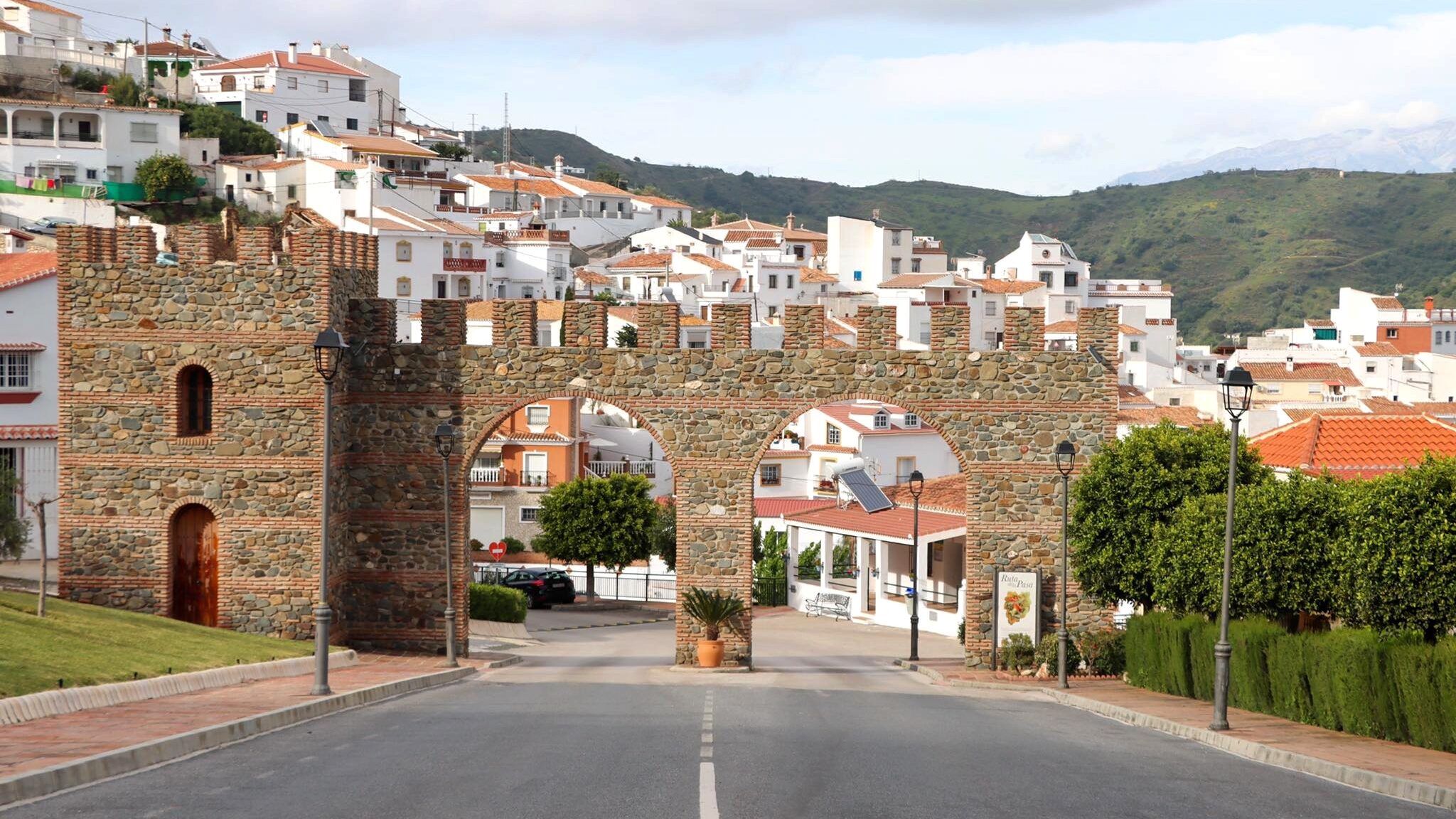
You can start the Ruta de la Pasa wherever is more convenient for you. I began in Moclinejo so that I could finish the route closer to Malaga’s city centre. Moclinejo is one white village along the route that doesn’t have too many points of interest to look at. You can spend just over an hour here and easily see everything.
The village has Moorish roots, and every September hosts the Fiesta de Viñeros which is a big event in their calendar. Moclinejo’s Plaza de España sits in the heart of the village, and is next to the village’s other main points of interest: Iglesia de Nuestra Señora de Gracia, the Centre for the Study of the Raisin and Muscatel Wine, and Bodega Antonio Muñoz Cabrera.
My favourite attraction in Moclinejo though is the entrance arch and tower which was built to resemble a castle. There are free parking spaces along the road just inside of the arch, and it takes less than 10 minutes to walk to the main plaza from it.
Almachar
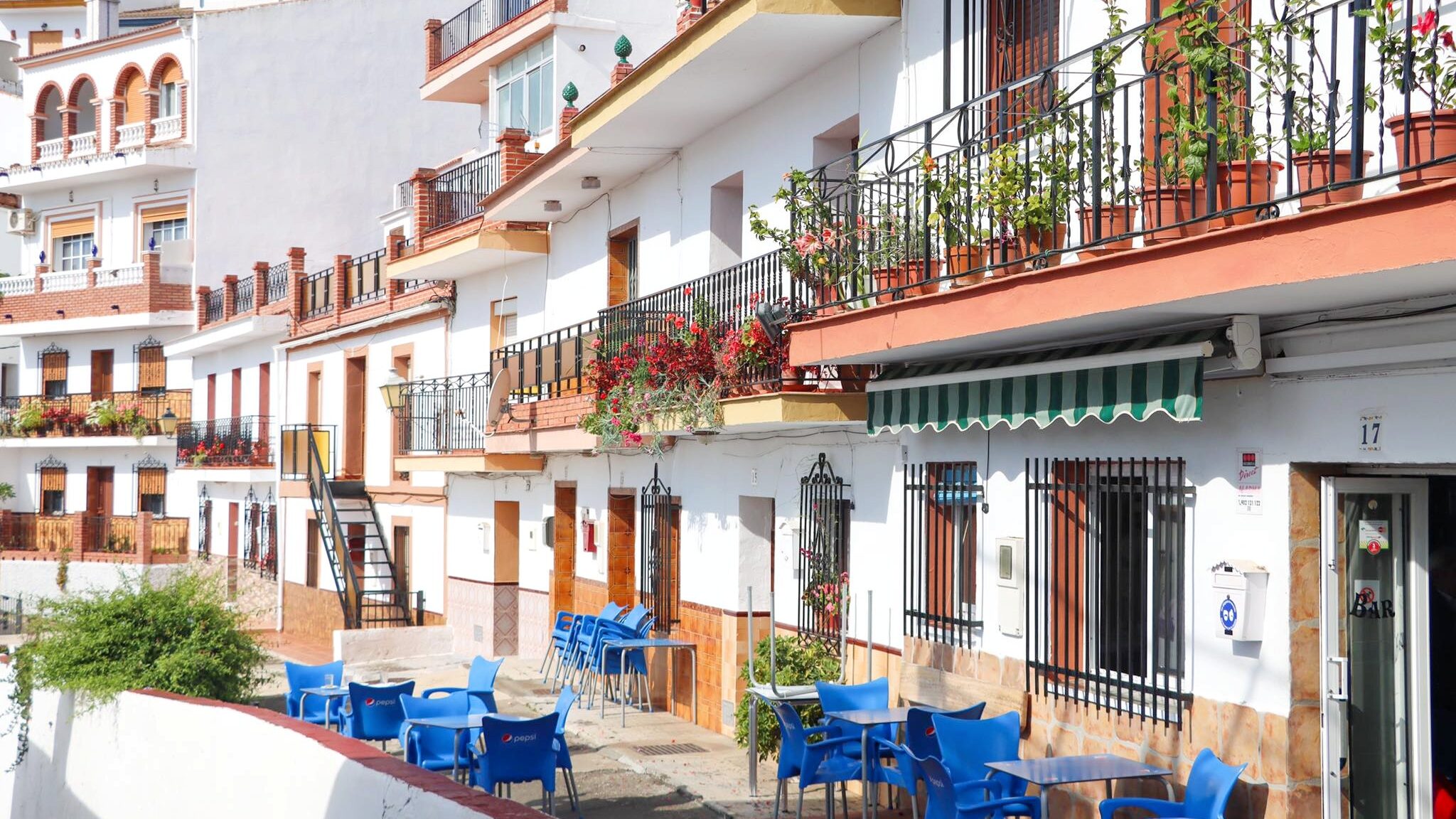
Next stop on the Ruta de la Pasa is the inland white village of Almachar. The village dates back to the Moorish period, and its name in Arabic translates to the meadows. After the Reconquest in the 15th century, the farmers here were known as Moriscos – Moors who had converted to Christianity. There aren’t too many things to do in Almachar, but it’s a very picturesque village to walk around.
Its main points of interest are the 16th century Parroquia de San Mateo and the Museo de la Pasa (Raisin Museum), which was unfortunately closed when I visited but comes highly recommended. In September the village hosts the Fiesta del Ajoblanco which celebrates its local cuisine. There’s a large hill leading up to the village that you can park along for free, or if there are no spaces available there is a huge parking lot at the very bottom of the hill as well. Don’t drive into the village though because the streets are very narrow and there’s nowhere to park for visitors.
El Borge
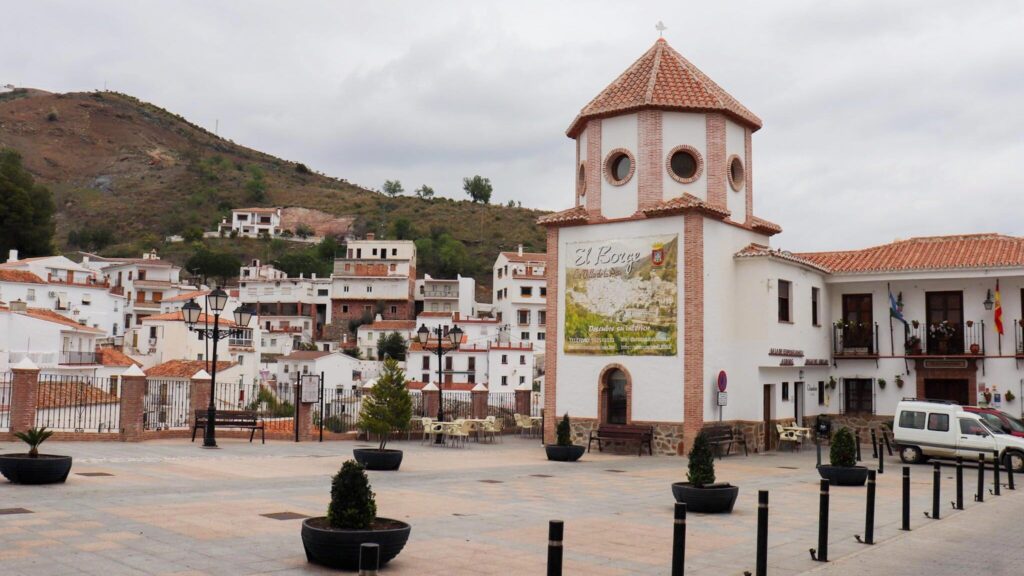
A short drive along the Ruta de la Pasa from Almachar will bring you to El Borge. This is one of the main white villages along the route, and it has quite an extensive list of things to see. El Borge and the area surrounding it played a prominent role during the struggle for dominance between the Moors and the Christians in the 15th century. It’s certainly one inland white village in Malaga that’s steeped in history.
The village prides itself on its production of raisins, as is evident as you pass under the Arco de la Pasa at its entrance. Its main attraction is the 16th century Iglesia de Nuestra Señora del Rosario which was commissioned by Queen Isabella. It sits in the Plaza de la Constitucion which is where many of the village’s public events are held, such as the Fiesta de la Pasa. If you’re interested in learning about bandits, El Borge also has a museum dedicated to banditry in the area.
Benamargosa
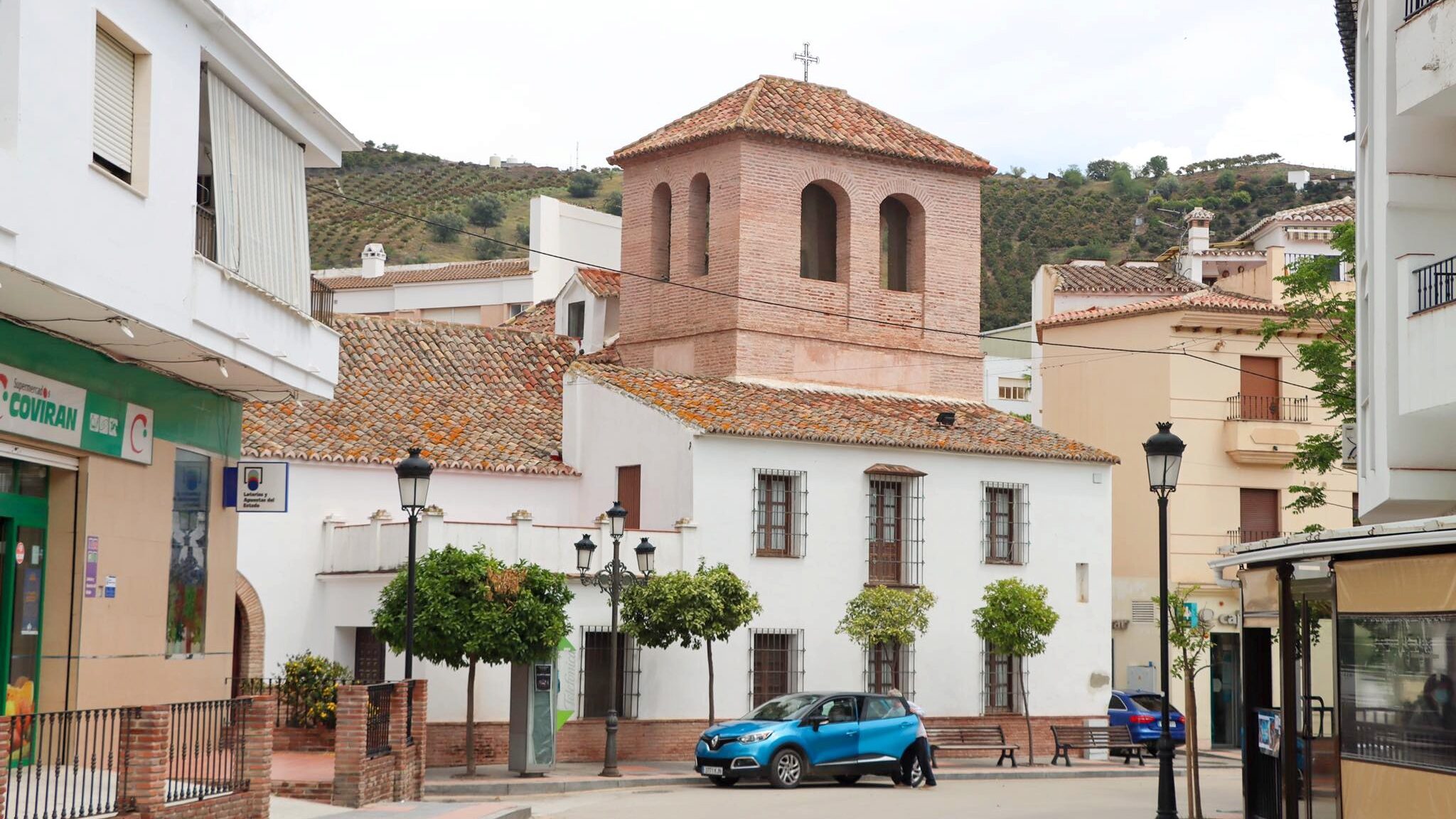
Our next stop is the white village of Benamargosa. This white village dates back to the 15th century, when it was documented that 45 Mudejars were allowed to live there (Moors given permission to live under Christian rule). It sits in the heart of the Axarquia region and is surrounded by sub-tropical crops and orchards.
If you don’t have time to visit all of the white villages along the Ruta de la Pasa, Benamargosa is one that you could probably skip as there aren’t many things to see here. It is, however, a very beautiful village and it’s worth walking up and down its historic streets.
The main attractions here are the Iglesia de la Encarnacion, the Ermita San Sebastián, the Puente de los Diez Ojos (Bridge of the Ten Eyes), and the Arco de la Huerta. Benamargosa has a rich cuisine based on its local produce, so it might be a good idea to stop here for something to eat in the middle of the day.
Cutar
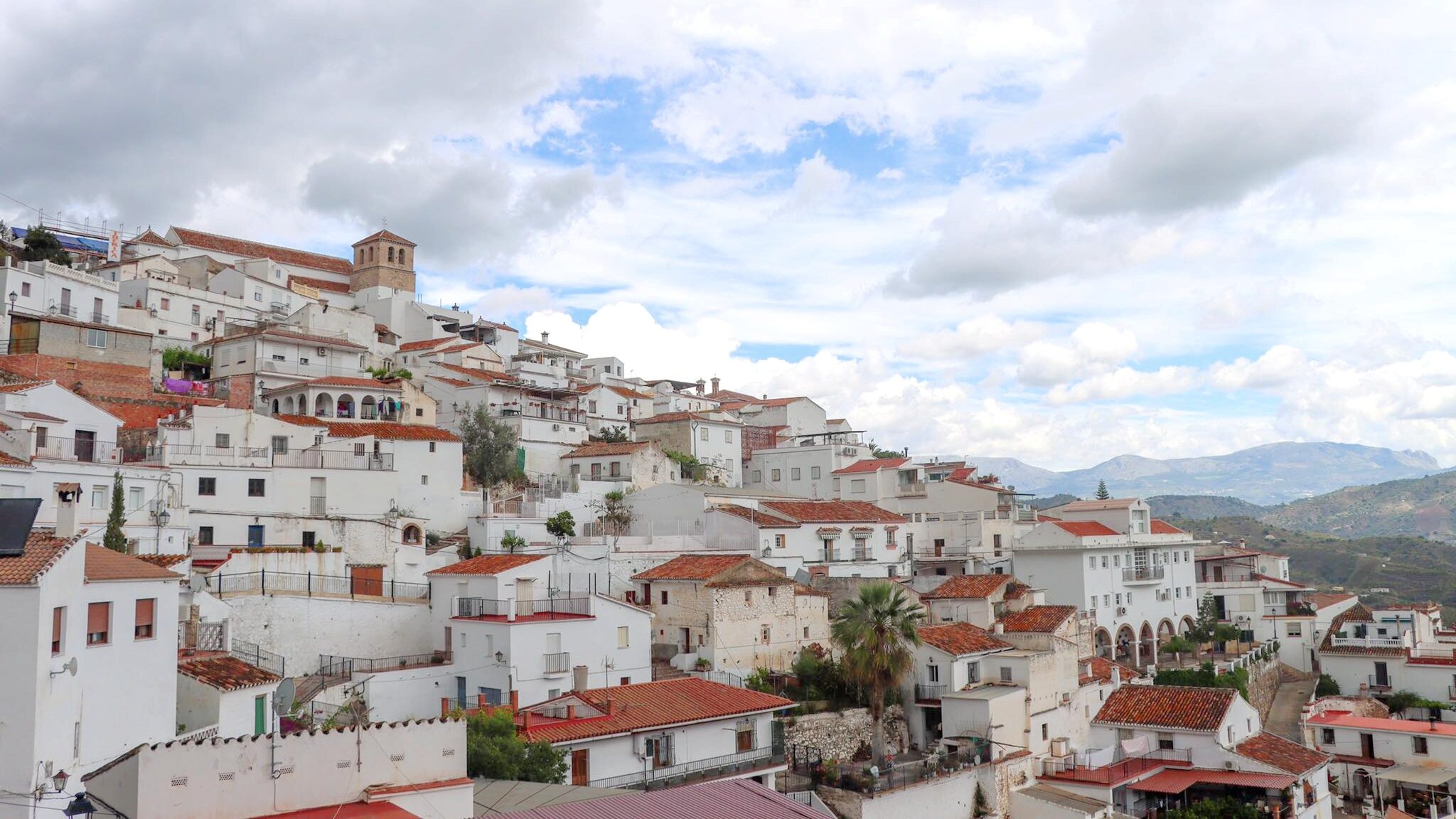
A very short drive through the hillsides from Benamargosa will bring you to the scenic white village of Cutar. It’s a beautiful village that grew out of a Moorish fortress that once stood here. The Fuente Aina Alcaharia is all that remains of its Moorish past, but the fountain area has been very well maintained and is worth stopping at.
The 16th century Iglesia de la Virgen de la Encarnacion sits at the highest point of the village and is its main attraction. The Museo del Monfi is another point of interest in Cutar that’s worth stopping at if you want to learn more about the history of the region. This village is extremely steep to walk up, so make sure you’re wearing comfortable shoes or you’re going to struggle.
Comares
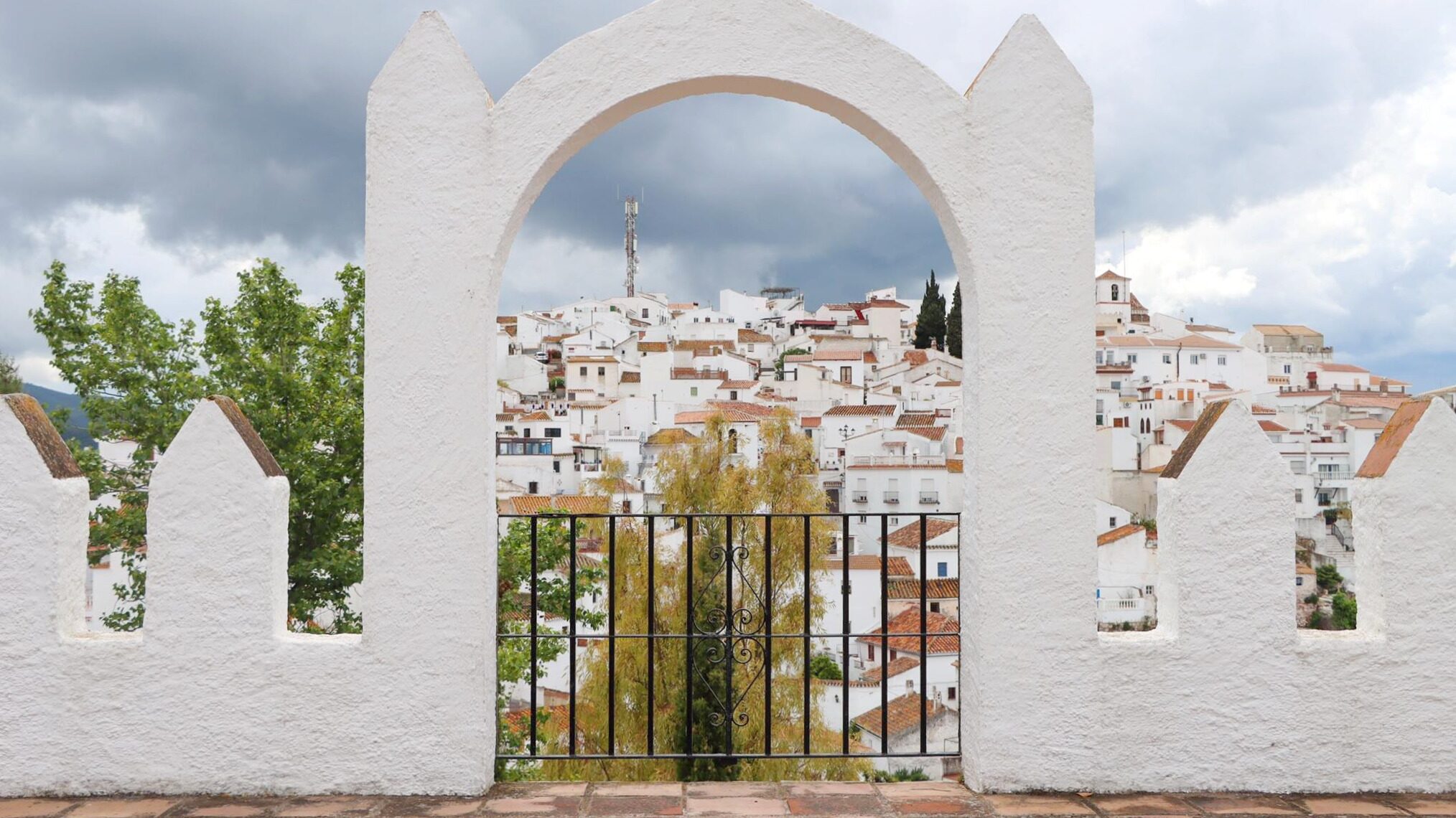
Comares is my favourite village along the Ruta de la Pasa. It’s considered to be the highest village in the Axarquia, and still retains much of its Moorish influence in its architecture and its street layouts. There are quite a lot of things to do in Comares so it will take you a few hours to get around it fully. While you’re strolling through the streets, you’ll see a lot of ceramic panels showing scenes from the village’s history, and a number of Arabic arches too.
The main attractions in Comares are the Puerta de Malaga, the 16th century Iglesia de Nuestra Señora de la Encarnacion, Castillo de Comares which was built during the Moorish period, and the Mirador Balcon de la Axarquia. In July, Comares hosts the Fiesta de Verdiales where they invite groups of musicians to play and dance, with lots of its local wine being served. There are plenty of free parking spaces just before the Puerta de Malaga, and from there it’s only a short walk into the village itself.
Totalan
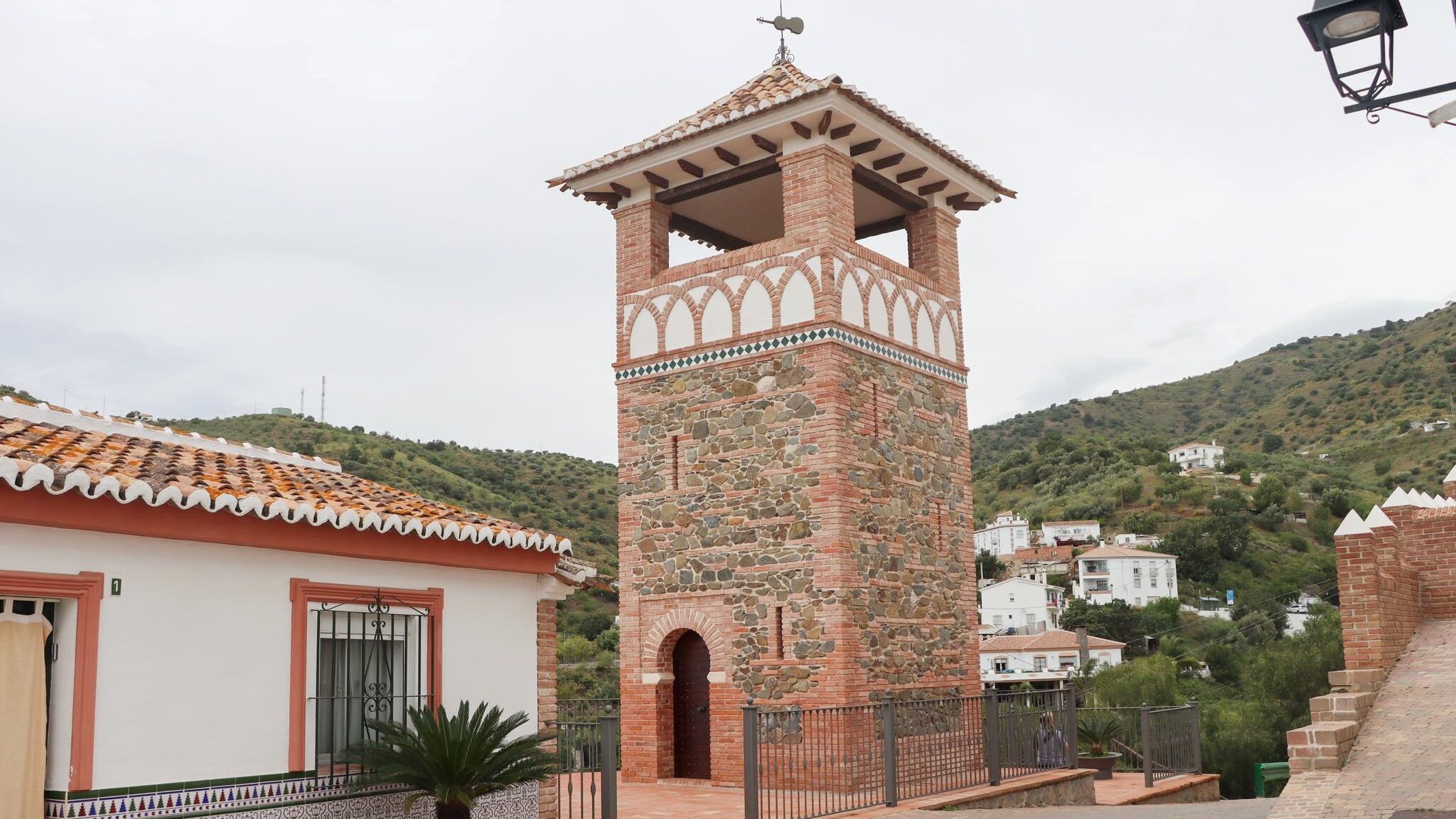
The final village on our drive of the historic Ruta de la Pasa is Totalan, whose name is said to have come from the Arabic word for cake. This Moorish white village is very pretty to walk around, even on a cloudy day, and has a couple of interesting attractions to visit too.
Its main attraction is the Torre del Violin located at the Mirador del Zagal, which was only built in 2010. It’s meant to commemorate a defeat of the Christian army by El Zagal, whose attack began at the sound of a violin. The oldest building in Totalan is the Iglesia de Santa Ana which dates back to the 16th century and sits in a charming little plaza.
Totalan was also home to the famous Spanish flamenco dancer and singer Antonio Molina, who has a statue dedicated to him in Plaza de Antonio Molina. It’s a beautiful white village in Malaga to visit, even if you aren’t planning on driving the historic Ruta de la Pasa.
When you think of Malaga, you probably don’t think of raisins, which is why I was so surprised that this driving route existed. It’s a fantastic way to learn more about the Axarquia region and explore the white villages that are a little bit further away from the Costa del Sol. This part of the province is also home to some fascinating castles in Malaga that I would recommend visiting, and even has a 6000 year old Dolmen located only a few minutes drive from Totalan. The next time you’re in Malaga or visiting southern Spain, don’t forget to go driving along the Ruta de la Pasa in the Axarquia – you’ll love every minute of the adventure!
If you’re looking to stay in this area of Malaga, I would recommend staying in the midst of avocado and mango plantations at Finca Buenavista in Chilches who offer both apartments and private rural houses to rent. I would love to hear about your experiences in this region of Malaga, so please drop me a comment below. Remember to follow me on my travels on Instagram too!
This post may contain affiliate links, which means I may earn a commission from the discount codes used or when a link/ad is clicked. All purchases made will come at no extra cost to you, and I only include products and services that I would personally recommend.
Pin this blog post for later!
